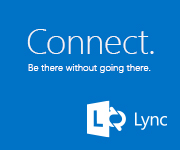Update Rollup 3 (UR3) for Exchange Server 2010 SP1 Released
Microsoft has released the following update rollup for Exchange Server 2010:
- Update Rollup 3 for Exchange Server 2010 SP1 (2492690)
If you’re running Exchange Server 2010 SP1, you need to apply Update Rollup 3 for Exchange 2010 to address the issues listed below.
Remember, you only need to download the latest update for the version of Exchange that you’re running.
Here is a list of the fixes included in update rollup 3:
- 2506998 A call is disconnected when transferring the call from the main auto attendant to an auto attendant that has a different language configured in an Exchange Server 2010 environment
- 2497682 The store.exe process crashes when you try to dismount an active copy of a mailbox database that is hosted by a mailbox server in an Exchange Server 2010 SP1 environment
- 2497669 A meeting request cannot be opened after you disable the “Display sender’s name on messages” option in the EMC on an Exchange Server 2010 server
- 2494798Â Certain email messages cannot be downloaded when you log on to an Exchange Server 2010 mailbox by using an IMAP4 client application
- 2494389Â Unnecessary events are logged in the Application log when you run the “Test-EcpConnectivity” cmdlet in an Exchange Server 2010 environment
- 2489822 “The Mailbox you are trying to access isn’t currently available” error when you use OWA Premium to try to delete an item that is in a shared mailbox
- 2489713 Exchange Server 2010 SP1 supports the remote archive feature after an update changes Outlook cookies name
- 2489602Â The “Get-FederationInformation” cmdlet cannot query federation information from an external Exchange organization in an Exchange Server 2010 environment
- 2487852Â “You do not have sufficient permissions. This operation can only be performed by a manager of the group.” error message when you try to change the “ManagedBy” attribute in an Exchange Server 2010 SP1 environment
- 2487501 The body of an email message is empty when you try to use an IMAP client application to read it in an Exchange Server 2010 environment
- 2484862 You cannot read an email message by using an IMAP client in an Exchange Server 2010 environment
- 2482471 A content search fails in an IMAP client application that connects to an Exchange Server 2010 mailbox
- 2482103Â It takes a long time to expand a distribution list by using EWS in an Exchange Server 2010 environment
- 2482100Â You cannot create or update an inbox rule that specifies the “NoResponseNecessary” value by using EWS in an Exchange Server 2010 environment
- 2481283 Various issues occur after you use Outlook to sign and then forward an email message in an Exchange Server 2010 environment
- 2479875Â The Microsoft Exchange Mailbox Replication Service service crashes when you run the “New-MailboxImportRequest” cmdlet to import a .pst file into a mailbox in an Exchange Server 2010 environment
- 2479227 A forwarding rule does not function and the EdgeTransport.exe process crashes on an Exchange Server 2010 server
- 2476973 Event ID 2168 is logged when you try to back up Exchange data from a DAG in an Exchange Server 2010 SP1 environment
- 2469341 Various issues occur after you forward a signed email message by using Outlook in online mode in an Exchange Server 2010 environment
- 2468514 OWA 2010 removes Calendar links that you add into multiple calendar groups by using Outlook 2010 calendar
- 2467565 You cannot install an update rollup for Exchange Server 2010 with a deployed GPO that defines a PowerShell execution policy for the server to be updated
- 2464564Â You cannot change your password if the user name that you type in OWA is in UPN format when you enable Exchange Server 2010 SP1 Password Reset Tool
- 2463858 A request to join a distribution group does not contain the distribution group name in an Exchange Server 2010 SP1 environment
- 2463798Â Users may experience a decrease in performance in Outlook or in OWA when you use IMAP4 to access the calendar folder in an Exchange Server 2010 SP1 environment
- 2458543Â A memory leak occurs in the Exchange RPC Client Access service on Exchange Server 2010 servers
- 2458522 Entries disappear from a junk email blocked list or a junk email safe list after you install Exchange Server 2010 SP1
- 2457868 “HTTP Error 400 Bad Request” error message when you use OWA in Exchange Server 2010 SP1 to receive instant messages by using Internet Explorer 9
- 2457688 Error message when you try to add an external email address to the safe sender list in OWA in an Exchange Server 2010 SP1 environment
- 2457304 You receive a synchronization failed email message when you synchronize your mobile device by using ActiveSync on an Exchange Server 2010 mailbox
- 2451101Â 7 BITÂ is not in quotation marks when you use the “FETCH (BODYSTRUCTURE)” command to request for a specific message in an Exchange Server 2010 environment
- 2447629 Event ID 4999 is logged when the Exchange Mail Submission Service crashes intermittently on an Exchange Server 2010 Mailbox server
- 2445121Â A memory leak occurs in the Microsoft.Exchange.Monitoring.exe process when you run the “Test-OwaConnectivity” cmdlet or the “Test-ActiveSyncConnectivity” cmdlet in the EMS on an Exchange Server 2010 server
- 2443688 Event ID 10003 and Event ID 4999 are logged when the EdgeTransport.exe process on an Exchange Server 2010 server crashes
- 2432494 You cannot view the mailbox database copies that are hosted on certain Mailbox servers by using the Exchange Management Console after you install Exchange Server 2010 SP1
- 2426952 You cannot remove a mailbox database copy from a database on an Exchange Server 2010 server
- 2424801 The Microsoft Exchange Service Host service on an Exchange Server 2010 server crashes
- 2423754 The recipient response status is incorrect after you add another user to an occurrence of a meeting request in an Exchange Server 2010 environment
- 2417084 A public folder disappears from the Public Folder Favorites list of an Exchange Server 2010 mailbox
- 2410571Â A RBAC role assignee can unexpectedly change permissions of mailboxes that are outside the role assignment scope in an Exchange Server 2010 environment
- 2398431Â Using Pipelining in SMTP to check email addresses does not work correctly when you disable tarpitting functionality on a Receive connector in an Exchange Server 2010 environment
- 2277649 You receive misleading information when you run the “New-TestCasConnectivityUser.ps1” script on an Exchange Server 2010 server
- 2009942 Folders take a long time to update when an Exchange Server 2010 user uses Outlook 2003 in online mode
Download the rollup here. The Update Rollup will be available via Microsoft Update on March 22nd 2011.
Microsoft has announced that Update Rollup 4 for Exchange Server 2010 SP1 is expected to be released in May 2011.
Installation Notes:
If you haven’t installed Exchange Server yet, you can use the info at Quicker Exchange installs complete with service packs and rollups to save you some time.
Microsoft Update can’t detect rollups for Exchange 2010 servers that are members of a Database Availability Group (DAG). See the post Installing Exchange 2010 Rollups on DAG Servers for info, and a script, for installing update rollups.
Update Rollups should be applied to Internet facing Client Access Servers before being installed on non-Internet facing Client Access Servers.
If you’re installing the update rollup on Exchange servers that don’t have Internet access, see “Installing Exchange 2007 & 2010 rollups on servers that don’t have Internet access†for some additional steps.
Also, the installer and Add/Remove Programs text is only in English – even when being installed on non-English systems.
Note to Forefront users:
If you don’t disable Forefront before installing a rollup or service pack, and enable afterwards, you run the risk of Exchange related services not starting. You can disable Forefront by going to a command prompt and navigating to the Forefront directory and running FSCUtility /disable. To enable Forefront after installation of a UR or SP, run FSCUtility /enable.





Follow Me